Objective: Toddlers undergo immense changes in their language comprehension and production in a short period of time. However, compared to other age groups, we know relatively little about the neural underpinnings of language comprehension during this important developmental period, as awake toddlers are challenging to study using functional magnetic resonance imaging (fMRI). Our goal was to create a task tailored to this age group using engaging, naturalistic stimuli, as well as adapt our scanning protocol to maximize success with toddlers.
Methods: We developed a novel, child-friendly fMRI task to measure language-evoked activation in the brains of awake toddlers (18-36 months). Using a block design, we presented 20-second videos of puppets (from Sesame Street) with the audio track played normally or rendered incomprehensible. The edited 20-second videos depict either monologue (speech directed to the child) or dialogue (two puppets interacting with each other). We previously validated that this task elicits robust and reliable language responses in adults. We then began using this task during fMRI scans with awake toddlers (N=6 toddlers with usable data analyzed thus far). Using Forward>Backward speech as our language contrast, we examined (1) group-level activation for the language contrast in the whole brain, (2) individual-level activation within language regions by condition, using individually-defined functional regions of interest for language iteratively defined and tested in held-out data, and (3) lateralization for language within individual participants.
Results: Preliminary results from N=6 toddlers with usable data (ages 26-36 months) suggest that we can measure language-evoked activation in canonical left-hemisphere language regions in this age group. Furthermore, preliminary data indicates that language-evoked activation may be left lateralized in toddlers.
Conclusion: Though preliminary, these results point to the possibility and promise of studying language network in awake toddlers using fMRI.
Poster: fitng-holson
